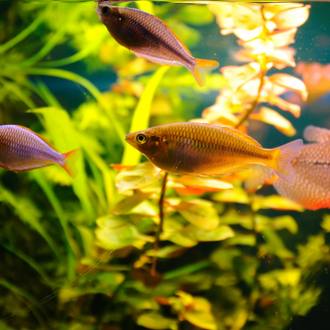How much maintenance is required to keep an aquarium healthy?
Index
For fish fanciers, we truly are living in the Age of Aquariums. Little fish bowls have been replaced by sophisticated, hi-tech, self-contained marine bio habitats that no longer cost the earth to buy and are easy to maintain.

When deciding to keep fish as pets, there is an initial choice to make, which will impact on cost and the amount of aquarium maintenance required. Tropical salt water fish, or cooler freshwater fish? With either choice, there are some simple factors to consider. Aquarium size is important, and interestingly a larger tank tends to be easier to clean because of accessibility, and will not need to be cleaned as often as a smaller tank. Also, consider where the tank is positioned because you will want easy access, and you do not want direct natural light from a window, as it will cause excessive algae growth. To avoid having to remove excessive waste and uneaten food particles, don’t overstock the aquarium and don’t overfeed the fish. Invest in a good, efficient and quiet filtration system.
Freshwater aquarium
Maintenance starts with a simple daily routine. Feed your little friends only as much as they will consume immediately, watch their behaviour to make sure none looks ill or off colour – if so, isolate it from the rest by placing it in a plastic bag full of the same tank water, placed back within the tank – check that the filter amd hoses are operating properly, and check that the water level, colour and clarity is okay. As a weekly routine: Use a magnet or scraper to clean off algae from the interior surface of the glass and any decorations. Refresh the water by siphoning about 15 per cent into a bucket and replacing it with fresh tap water (most tap water in Australia is of sufficient quality but check with your local aquarium retailer who can sell you a simple kit to check and adjust the pH balance if necessary, and enough de-chlorinating agent to last a year for just a few dollars), and at the same time remove any matter from the tank’s gravel and tidy up and trim any live plants. Don’t fuss too much about a small amount of algal growth, because it adds a natural look to underwater rocks and plants. If the algae seems excessive, check with your aquarium retailer that you have the correct light bulbs (not too bright or hot), and that the light is on for no more than 10 hours a day. Catfish and other algae eaters will not control algae for you. In an under-gravel filter system, replace the carbon each week. In other filter systems, the carbon should be changed every month. Corner filters and external filters should be cleaned every couple of weeks – but always follow the manufacturer’s instructions. The water pump’s impeller should be cleaned at least once a year. When the outside of the tank needs a clean, make sure you do not spray any cleaning agents into the water.
Saltwater aquarium
Tropical fish tend to be much more colourful and exotic looking than freshwater fish … but that comes at a price, with more aquarium maintenance required. Tropical fish are expensive, so you want to look after them. Watch their behaviour, and look carefully each day for any signs of illness (sinking to the bottom or gasping for air at the surface are sure signs). If a fish is looking "a little green around the gills", immediately quarantine it. If one dies, remove the body immediately to avoid ammonia build-up. Obviously, every day ensure that the water temperature is correct for your species of tropical fish. Clean the skimmer cup daily. Ensure that the light globes are okay (replace every six months) and that the timer is functioning. Every week, scrape algae off the interior glass; clean all filters and hoses; replace evaporated water with prepared salt water (pre-mix a day earlier is best so it doesn’t shock the fish); check the salinity, nitrites, ammonia and pH balance, and add required trace elements, conditioners, and vitamins for the fish and coral – kits are available at your local aquarium retailer; clean off any build-up of salt on or around the tank. Special saltwater cleaners are available for cleaning the exterior of the tank, or use vinegar mixed with water – never use regular household cleaning fluids because tropical fish are too sensitive.
Draw up a weekly schedule of maintenance for your aquarium, especially if you opt for saltwater fish. It is a good idea to regularly run your eye over your aquarium for less obvious but potentially devastating problems, such as cracks or leaking joins that can unexpectedly expand, and any sign of problems with the aquarium’s stand.
